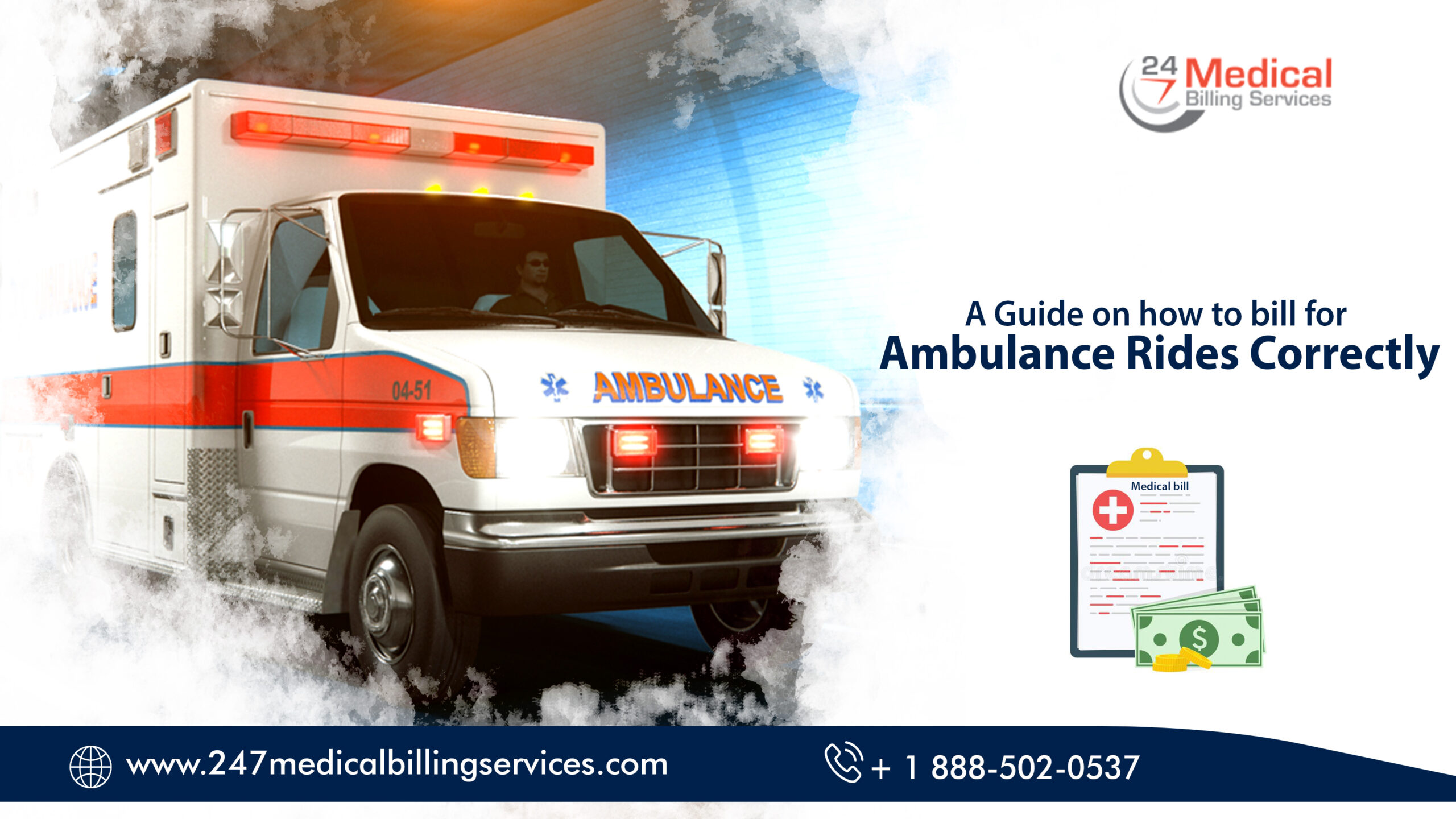
A Guide on How to Bill for Ambulance Rides Correctly
Did you know? Ambulance codes and guidelines apply only to non-physician providers. As the CPT codebook lacks procedure codes relevant to emergency medical service (EMS) providers, this makes Bill for Ambulance Rides services even more difficult.
Instead, ambulance and EMS transport coding guidelines are primarily derived from Medicare transmittals and MedLearn updates.
Payers typically cover ambulance services, including fixed and rotary-wing services, for patients whose medical condition necessitates air transport. To ensure that transportation is medically necessary, consider both the patient's condition and the mode of transportation.
This can be a difficult process that is dependent on the documentation provided by paramedics and emergency medical technicians (EMTs) covered in this blog.
Bill for Ambulance Rides Guidelines
- The CMS-1500 is used to bill for ambulance rides services provided by an independent ambulance provider.
- Ambulance claims must be submitted separately as an outpatient claims.
- Codes should be assigned based on the level of service provided rather than the type of vehicle used.
- Unless the patient was not transported, each claim should include a mileage code.
- Ambulance transportation to a clinic or mortuary is not reimbursable.
Ambulance Rides CPT Codes
There are CPT codes for ground ambulance services, which include both land and water transportation, and the codes are chosen based on the services provided and the patient's condition at the time of transport.
A0425: Ground mileage, per statute mile.
A0426: Ambulance service, advanced life support, non-emergency transport (Level 1)
A0427: Ambulance service, emergency transport, advanced life support level 1 (ALS1-emergency).
A0428: Ambulance service, basic life support, non-emergency transport (BLS).
A0429: Basic life support, Ambulance service, emergency transport (BLS-emergency).
A0433: Advanced life support, ALS2
A0434- Specialty Care Transport (SCT)
Break Down of Ambulance Services Categories
There are seven categories of ground ambulance services ("ground" refers to both land and water transportation) and two categories of air ambulance services in the Ground Ambulance Services section of the ambulance fee schedule. The level of service is determined by the patient's condition rather than the vehicle used. This is a difficult task for many coders.
In addition to the HCPCS, Level II procedure codes, and standard set of modifiers, a unique set of modifiers that are affixed to the procedure code are required to identify the origin and destination. Mileage must also be calculated, which adds complications if this information is not clearly documented.
Modifiers for First Position: Alpha Code Equals Origin
D: Diagnostic or therapeutic site other than P or H when used as origin codes.
E: Residential, custodial, domiciliary facility
G: Hospital-based ESRD facility
H: Hospital
I: Transfer site (e.g., airport or helicopter pad) between modes of ambulance transportation
J: Freestanding ESRD facility
N: SNF
P: Physician’s Office
R: Residence
X: Intermediate stop at physician's office on the way to the hospital
Modifiers for Second Position: Alpha Code Equals Destination
CR: Concerned with a catastrophe or declared disaster
GA: ABN was required and obtained
GM: Various modes of patient transportation
GX: ABN was optional and obtained
GY: Service that is statutorily prohibited
GZ: ABN was required but not obtained
QJ: Incarcerated patient
QL: Patient pronounced dead after ambulance called
QM: Under the arrangement
Most Common Ambulance Errors
The following are the most common ambulance billing errors:
- No PCS submitted or obtained with the documentation (when demanded)
- Only 'loaded' ambulance miles are reimbursed by Medicare.
- The documentation did not back up the reported condition (s).
- Despite the submission of a valid ICD-9 code(s), the ICD-9 code alone had insufficient information.
Tips for Error-Free Ambulance Claims:
The following tips should be implemented to submit the error-free ambulance rides billing claims:
- Although the patient may have required an ambulance ride to the hospital, you must consider whether they still meet coverage criteria for the return trip.
- Confirm that the patient's origin and destination are covered by Medicare.
- Could the patient have gone another route safely?
- Did the patient's condition meet the coverage criteria?
- Are the mileage, origin, and destination specified?
- Attendant/EMT credentials must be included.
- Do you have a PCS? Is your certification still valid?
- Do you require a hospital, nursing home, or other third-party records to support the service bill for ambulance rides?
What Else?
Successful management of ambulance rides billing and coding is proving to be a strategic advantage point for providers in today's complex and evolving healthcare marketplace. No surprise, practices have embraced billing and coding outsourcing as a trump card for improving bottom lines. 24/7 Medical Billing Services, a professional and HIPAA compliant healthcare and health plan processing firm, has become the ideal choice for hundreds of American physician and non-physician providers. Medical billing outsourcing hasn't just gotten a foot in the door as a cost-cutting savior. In fact, it is driving the trend for clients, as they increasingly see it as a tool that provides broader business benefits.
Read more: Understanding The Complexity Of Ambulance Billing Services

.png)